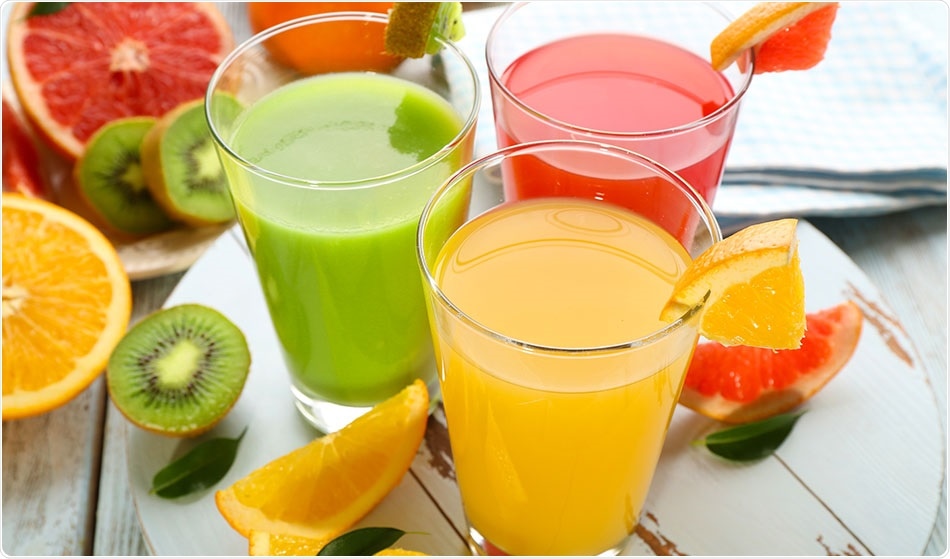As per the claim by the researchers, consuming apples affected levels of "friendly" bacteria, (bacteria that are beneficial for digestive health) and there by reduce the risk of some diseases. And bacteria help produce short-chain fatty acids that provide ideal pH conditions for ensuring a beneficial balance of microorganisms. They also produce butyrate, which is an important fuel for the cells of the intestinal wall. Interestingly, consumption of apple pectin (7% in the diet) increases the population of butyrate and beta-glucuronidase producing Clostridiales, and decreases the population of specific species within the Bacteroidetes group in the rat gut. Similar changes were not caused by consumption of whole apples, apple juice, puree or pomace....
Monday, January 25, 2010
Apple pectin as a novel prebiotic substance, that helps the intestinal microbiota....
As per the claim by the researchers, consuming apples affected levels of "friendly" bacteria, (bacteria that are beneficial for digestive health) and there by reduce the risk of some diseases. And bacteria help produce short-chain fatty acids that provide ideal pH conditions for ensuring a beneficial balance of microorganisms. They also produce butyrate, which is an important fuel for the cells of the intestinal wall. Interestingly, consumption of apple pectin (7% in the diet) increases the population of butyrate and beta-glucuronidase producing Clostridiales, and decreases the population of specific species within the Bacteroidetes group in the rat gut. Similar changes were not caused by consumption of whole apples, apple juice, puree or pomace....
Thursday, January 18, 2018
Trial shows apple allergen as effective treatment option for birch pollen-related apple allergy
Commenting on the findings Professor James CH Yang, Chairman, Graduate Institute of Oncology, National Taiwan University College of Medicine, Taipei City, Taiwan, said: "The results of this subset analysis are quite compatible with the findings in the overall population presented at the ESMO 2017 Congress in Madrid. We can therefore conclude that osimertinib can be considered as the standard of care for the first line treatment of Asian advanced NSCLC patients with EGFR mutations."
"The proportion of patients having adverse events that caused them to stop taking osimertinib was similar in the overall (13%) and Asian (15%) populations," added Yang. "We tend to think osimertinib is a well tolerated drug so these discontinuation rates were surprisingly high and need further investigation."
"It will also be important to know whether Asian and non-Asian patients in the FLAURA trial with brain metastases had similar outcomes," said Yang.
Monday, November 10, 2014
An apple a day could keep obesity away
Friday, October 4, 2013
Apple impregnated with tangerine juice reduces risk of cardiovascular disease in obese children
Wednesday, October 9, 2013
Apple impregnated with tangerine juice reduces risk of cardiovascular disease in obese children
Friday, December 2, 2011
Monday, February 27, 2017
Is Avocado Good for Diabetes?
Diet and diabetes
How much avocado can people with diabetes eat?
Avocados and heart health
Fiber, blood sugar levels, and feeling full
Is Avocado Good for Diabetes?
Thursday, June 2, 2022
FDA Approves Tlando (testosterone undecanoate) for Male Hypogonadism
Antares Pharma, Inc., (NASDAQ: ATRS) (the “Company”), a specialty pharmaceutical company, today announced that the U.S. Food and Drug Administration granted final approval for TLANDO™ (testosterone undecanoate), an oral treatment for testosterone replacement therapy (“TRT”) indicated for conditions associated with a deficiency or absence of endogenous testosterone, or hypogonadism in adult males.
Robert F. Apple, President and Chief Executive Officer of Antares Pharma, commented, “The FDA approval of TLANDO brings to market an oral formulation of testosterone that we believe will prove beneficial to physicians and their patients. We have recently expanded our commercial organization to 108 sales representatives and expect to leverage our relationships with urologists and endocrinologists to drive adoption of TLANDO. This approval also reinforces the opportunity for Antares to continue to drive share gains in the TRT market with both TLANDO and XYOSTED and support our future growth with an expanded commercial portfolio. We look forward to launching TLANDO commercially, which will provide a complementary treatment option to patients and clinicians in the second quarter of this year.”
“We are excited with the opportunity to commercialize TLANDO and reinforce our commitment to the TRT market. Our existing commercial capabilities and presence in the market with XYOSTED provide an important foundation for the potential commercial success of TLANDO. With an expanded commercial footprint, we expect to continue to foster our strong physician relationships to support their patient-centric care and preference for different treatment options. We believe TLANDO’s oral formulation and convenient dosing, which requires no titration, differentiates it from other treatment options. As we prepare for the commercial launch, we look forward to our sales representatives detailing a differentiated portfolio of products consisting of XYOSTED, TLANDO and NOCDURNA that will continue to deliver solutions for improved patient care,” added Joe Renda, Senior Vice President, Commercial of Antares Pharma.
Sunday, September 6, 2009
Fruits better than prviously thought !.......
Monday, August 30, 2010
Plantain and broccoli fiber help in Crohn’s disease........
Friday, January 1, 2010
Oleanolic acid capsules for Hepatitis B......
Thursday, July 15, 2010
Cashew Seed Extract an Effective Anti-Diabetic ?
"Of all the extracts tested (out of leaves, bark, seeds and apples), only cashew seed extract significantly stimulated blood sugar absorption by muscle cells," says senior author Pierre S. Haddad, a pharmacology professor at the University of Montreal's Faculty of Medicine. "Extracts of other plant parts had no such effect, indicating that cashew seed extract likely contains active compounds, which can have potential anti-diabetic properties."
Researchers conclude that, activation of adenosine monophosphate-activated protein kinase by CSE and AA likely increases plasma membrane glucose transporters, resulting in elevated glucose uptake. In addition, the dysfunction of mitochondrial oxidative phosphorylation may enhance glycolysis and contribute to increased glucose uptake. These results collectively suggest that CSE may be a potential anti-diabetic nutraceutical.
Monday, February 19, 2018
One hundred percent fruit juice does not alter blood sugar levels

Friday, April 6, 2012
Berries, Tea May Cut Men's Odds for Parkinson's: Study
Tuesday, October 18, 2016
High fruit intake during adolescence linked with lower breast cancer risk: But increasing alcohol intake in later life associated with higher risk









